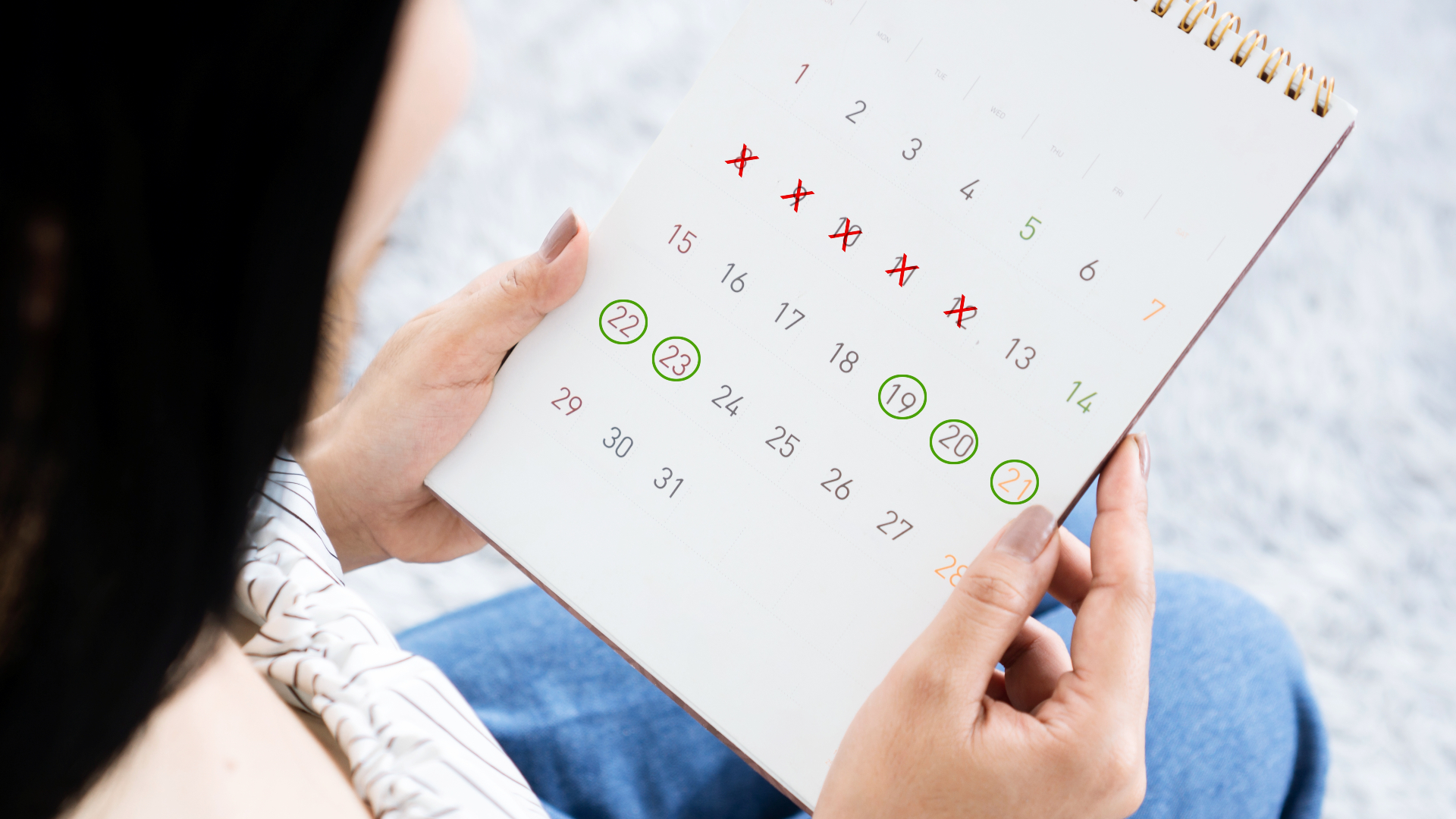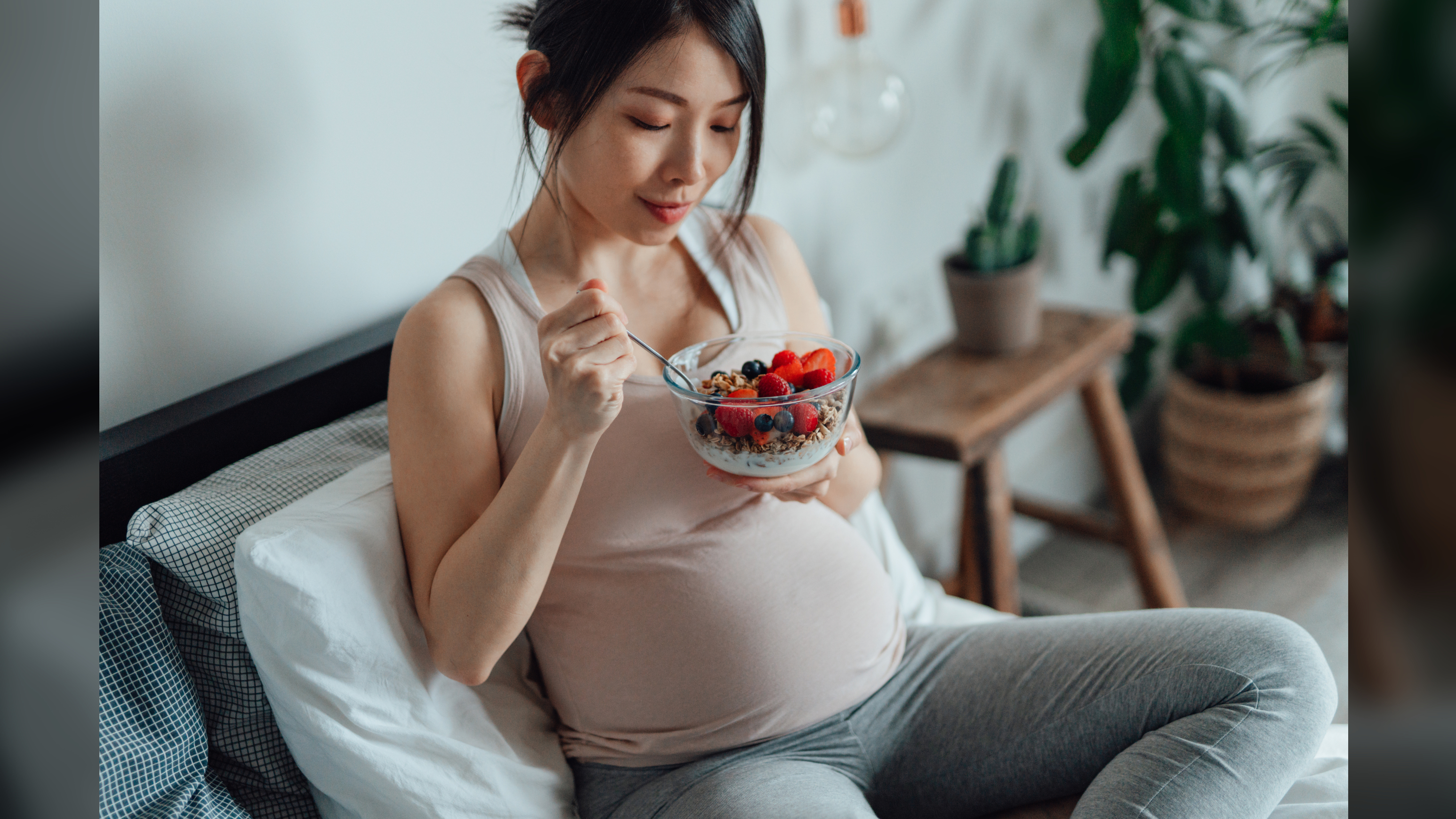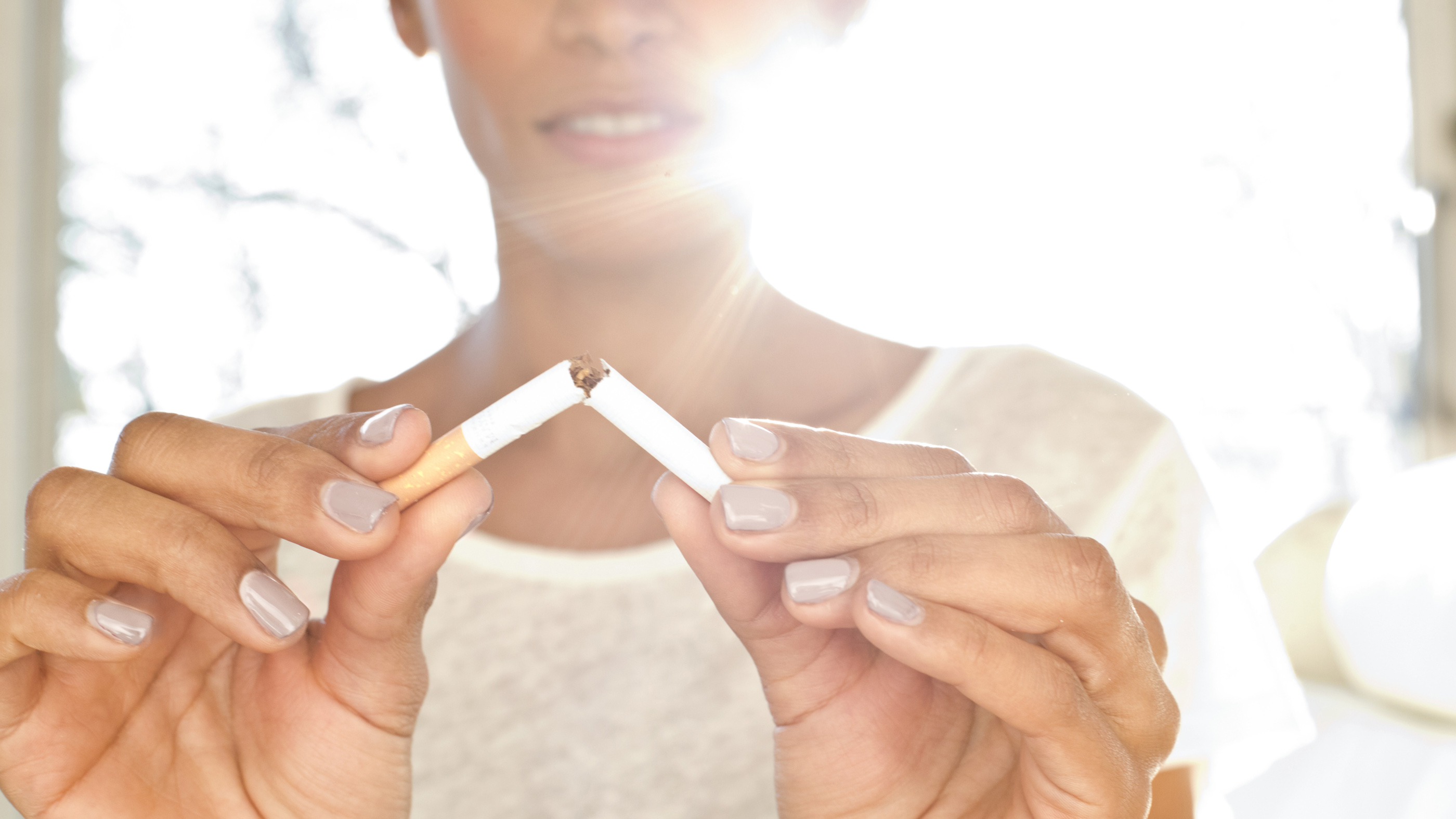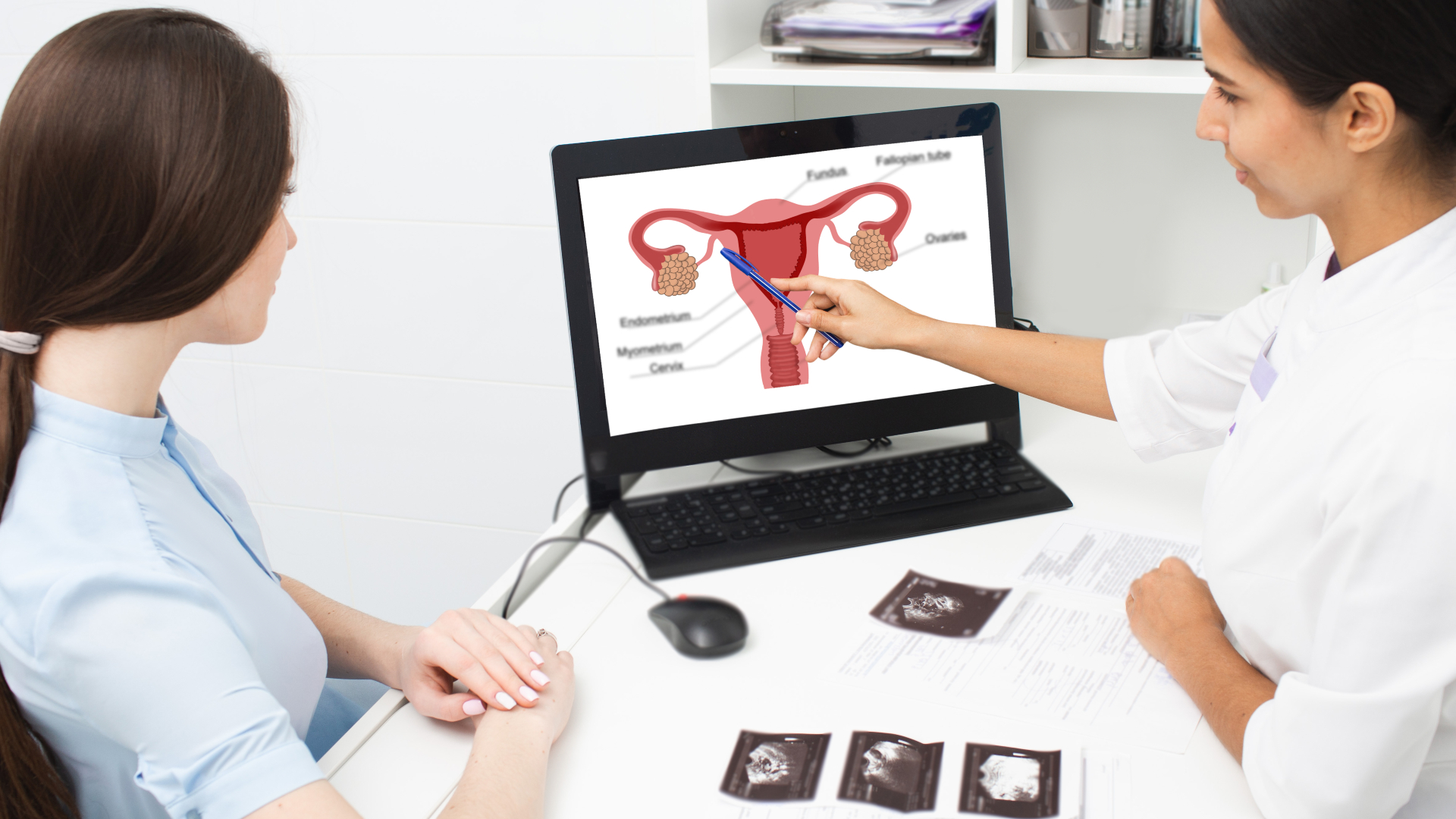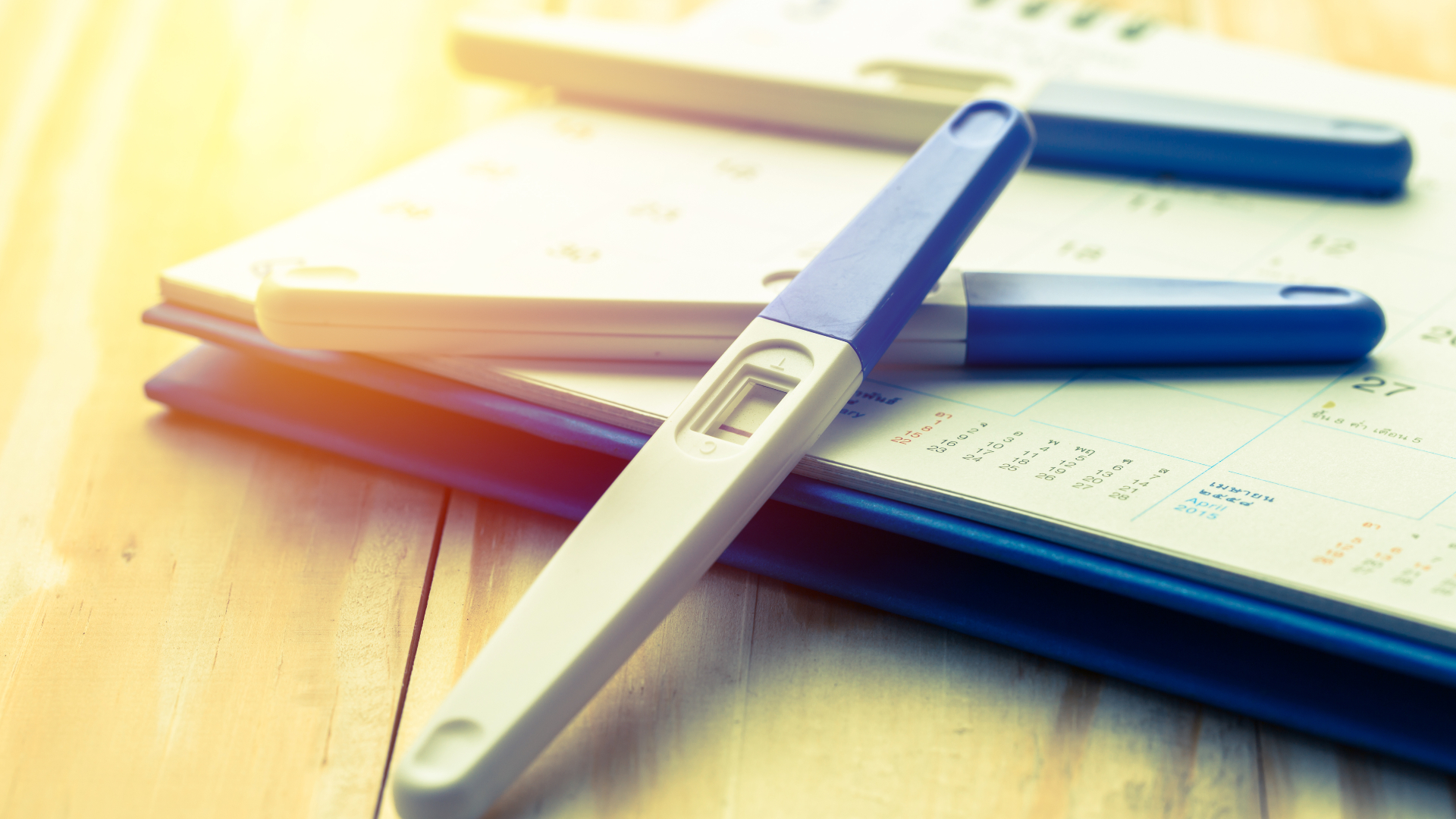How to get pregnant: Tips and facts to increase fertility
We've spoken to the experts to come up with 10 tips for how to get pregnant quickly and safely.
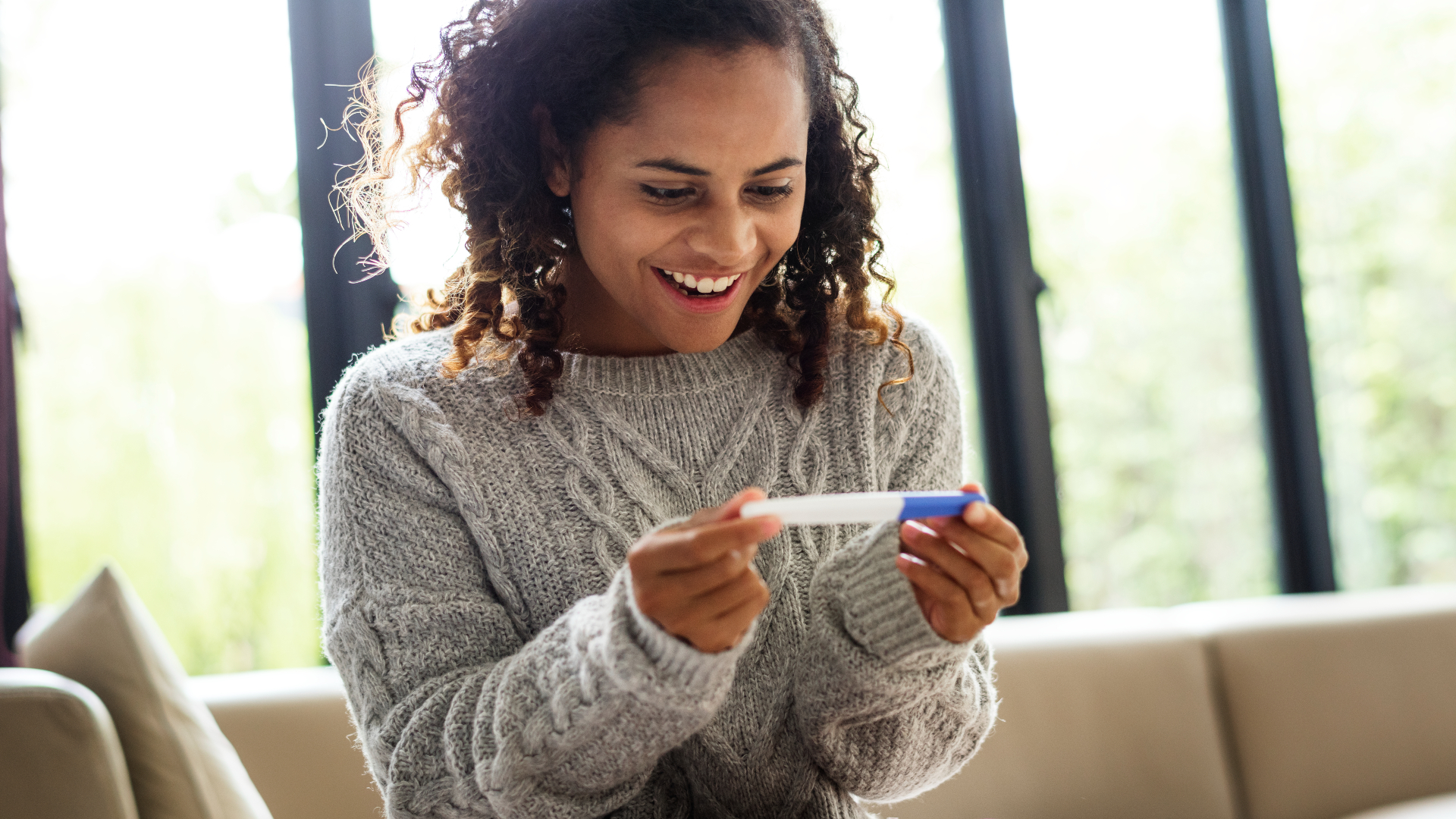
- Tip 1: Track period
- Tip 2: Monitor ovulation
- Tip 3: Find 'fertile window'
- Tip 4: Strive for healthy weight
- Tip 5: Take a prenatal vitamin
- Tip 6: Eat healthy foods
- Tip 7: Find balance in workouts
- Tip 8: Know the impact of age
- Tip 9: Kick smoking
- Tip 10: Know when to seek help
- How to get pregnant if you have PCOS
- What if you have endometriosis?
- Other questions
- Additional resources
You may have many questions about how to get pregnant, particularly if you have an underlying condition. Taking care of your body is a good first step to optimize your fertility. But what else can you do to improve your odds of having a baby?
The most important advice for a woman who wants to get pregnant is to get to know her body, specifically her menstrual cycle, said Dr. Mary Ellen Pavone, a reproductive endocrinologist and infertility specialist, and medical director of the in-vitro fertilization program at Northwestern Medicine's Reproductive Endocrinology and Infertility division in Chicago.
"It's important to know how far apart her cycles are so she can more accurately time intercourse to try to get pregnant," Pavone said.
We've highlighted the top ten tips that may help increase your chances of becoming pregnant. As always with this type of information make sure to speak to a medical professional as this advice is broad and you may require specialist attention. You should still find this article and accompanying video on how to get pregnant useful.
In addition, because pregnant women are more likely to get a severe case of COVID-19 compared with non-pregnant individuals, the Centers for Disease Control and Prevention (CDC) strongly recommends you get a COVID-19 vaccine. "The CDC health advisory strongly recommends COVID-19 vaccination either before or during pregnancy because the benefits of vaccination for both pregnant persons and their fetus or infant outweigh known or potential risks," the CDC said in a statement on Sept. 29, 2021.

Yasmine S. Ali, MD, MSCI, FACC, FACP, is an award-winning physician writer who has published across multiple genres and media. She is President of LastSky Writing, LLC, and has 25 years of experience in medical writing, editing, and reviewing, across a broad range of health topics and medical conditions.
Dr. Ali is board certified in general internal medicine and the subspecialty of cardiovascular disease. She is a Fellow of the American College of Cardiology (FACC) and a Fellow of the American College of Physicians (FACP).
How to get pregnant: Step-by-step instructions
1. Record menstrual cycle frequency
A woman who wants to have a baby should monitor the intervals between her periods–in other words, whether the first day of her period tends to occur the same number of days apart every month, which is considered regular. Conversely, her periods may be irregular, meaning her cycle lengths vary from month to month. By tracking this information on a calendar, a woman can better predict when she might be ovulating, according to research published in The New England Journal of Medicine. This is the time every month when her ovaries will release an egg. There are also some apps that can help with the tracking, such as GlowOvulation period tracker (see below).
A woman's egg is fertile for only 12 to 24 hours after its release, while a man's sperm can survive in a woman's body for up to five days according to the American Pregnancy Association.
Get the world’s most fascinating discoveries delivered straight to your inbox.
2. Monitor ovulation
Women with regular cycles ovulate about two weeks before the arrival of their periods, Pavone said. It's harder to predict ovulation in women with irregular cycles, but it usually occurs 12 to 16 days before the start of her next period.
According to a 2019 paper published in the journal npj Digital Medicine, there is a wide variety in the lengths of cycles of people who menstruate, and the time and duration of ovulation changes over a person's lifetime. This variability means that it is best to monitor ovulation to find out when the person is most likely to conceive.
There are several methods women can use to help determine their most fertile days each month.
Related: Signs of labor: 6 clues baby is coming soon
— Home ovulation-prediction kits can reduce the guesswork needed to figure out when a woman is ovulating. Sold at drug stores, the kits test urine for luteinizing hormone, a substance whose levels increase each month during ovulation and cause the ovaries to release an egg. The three days right after a positive test result are the best time for couples to have sex to increase their odds of becoming pregnant, the American Pregnancy Association said.
— Another method to predict ovulation is to track cervical mucus, which involves a woman regularly checking both the amount and appearance of mucus in her vagina. Just before ovulation, when a woman is most fertile, the amount of mucus increases, and it becomes thinner, clearer and more slippery, according to the March of Dimes, a nonprofit organization that campaigns for maternal and baby health. When cervical mucus becomes more slippery, it can help sperm make its way to the egg. A study published in 2013 in the journal Fertility and Sterility found that women who checked their cervical mucus consistently were 2.3 times more likely to get pregnant faster, over a six-month period.
— Basal body temperature is also a good way to monitor ovulation in most cases, according to research in the journal Fertility and Sterility. To do this, check your temperature every morning at the same time, before you get out of bed, and keep a chart or record of each day's reading. Why measure this at-rest temperature? Right before a woman ovulates, meaning one of her ovaries is about to release an egg, basal body temperature dips slightly, with an average body temperature of between 97 and 97.5 degrees Fahrenheit (36.1 and 36.4 degrees Celsius), according to the University of Michigan Health System; and then, 24 hours after the release of the egg, basal body temperature rises and will stay at that level for several days. A woman’s basal body temperature right after ovulation averages between 97.6 and 98.6 F (36.4 and 37 C), the University of Michigan Health System reported.
This egg will remain fertile for about 12 to 24 hours after ovulation, the university said.
Because your basal temperature change will be slight, it's important to use either a digital thermometer or a special basal thermometer, the university recommended.
3. Have sex every other day during the fertile window
The "fertile window" spans a six-day interval — the five days prior to ovulation and the day of it, according to the American Society for Reproductive Medicine. Every month, a woman is most fertile on these days.
Many women are turning to new technology tools, such as fertility-tracking apps and websites, to help them keep tabs on when they may be more likely to conceive, but a 2020 review in the journal BMJ Sexual & Reproductive Health suggests that there is limited independent research on their accuracy. In a study published in 2016 in the journal Obstetrics & Gynecology, scientists analyzed 50 popular fertility-tracking websites and apps with a hypothetical woman, and found that the results varied wildly, with many mistakenly tagging days outside of the fertility window, Live Science reported.
It’s also important to note that a report by Colorado State University highlights concerns around digital privacy and period tracking apps in the aftermath of the US Supreme Court overturn of Roe v Wade. Health data collected by these apps is not protected by HIPAA and there is a fear that this data could be used to criminalize women in states that ban abortions. A 2019 KFF survey found that close to a third of American women use a health app to track their menstrual cycles or fertility, so this is an issue of real concern to a large portion of the female population.
When a woman has identified that fertility window, should they have sex every day? Research has shown that there hasn't been a big difference in pregnancy rates between couples who had sex every day during the "fertile window" (37%) compared with couples who did it every other day (33%), Pavone said. "And having sex every other day might be easier for a couple to pull off," she added.
Related: Trying to conceive: 10 tips for men
Researchers evaluated hundreds of fertility and menstruation apps in the Apple app store, particularly for the quality of the app. The app quality score was based on several factors, such as the app’s usability, accuracy of information and tools provided, general features and specific fertility features, they reported in 2019 in the Journal of Obstetrics and Gynaecology Canada. While 31 of the apps showed serious inaccuracies, a few rose to the top. Here are the top 3 starting with the apps with the highest AQS score
- Glow Ovulation, Period Tracker
- Fertility Friend FF App
- Clue: Health & Period Tracker
Colorado State University recommends checking with Consumer Reports Digital Lab to evaluate the different apps and their privacy terms. The report states, "Two key things to look for with period trackers are whether the app's data remains on the phone (better for the consumer) or whether the data is stored in the app provider's cloud (greater privacy risk), and also whether the app shares data with a third-party app tracker." It can be hard to know this information without first downloading the app, but Consumer Reports makes this easier to check. The Colorado State University report also suggests tracking offline on a calendar, or on a personal spreadsheet if you don’t want to use an app at all.
There are plenty of pregnancy myths about conception. For example, there's no evidence that sex position will influence a couple's chances of having a baby, nor does a woman lying on her back for a certain amount of time after intercourse increase the odds of conceiving, Pavone told Live Science.
But she said there are some water-based vaginal lubricants that can decrease the movement of sperm, so Pavone recommended using Pre-Seed rather than Astroglide or K-Y Jelly when lubrication is needed.
4. Strive for a healthy body weight
A woman's weight can also impact the chances of conceiving: Being overweight or underweight may reduce those odds. Research has shown that a woman who is overweight can take twice as long to become pregnant as a woman whose body mass index (BMI) is considered normal weight, Pavone said. A woman who is underweight might take four times as long to conceive, she said.
Having too much body fat produces excess estrogen, which can interfere with ovulation, according to the Cleveland Clinic. A 2017 study suggested that couples in the study in which both partners were very obese, with BMIs of at least 35, took from 55% to 59% longer to become pregnant, compared with couples who were not obese, the researchers reported in the journal Human Reproduction.
In a study published in 2020 in the journal PLOS One, researchers looked at data from more than 50,000 couples in China trying to conceive over the course of a year; they found that women's ability to conceive within a given timeframe decreased as their BMI increased.
Male obesity, which can disrupt the male endocrine system as well as sperm viability and concentration, can also affect a couple's ability to become pregnant, scientists reported in 2020 in the journal Andrologia.
Women who are underweight, with a BMI less than 18, might not be getting regular periods or could stop ovulating, which also hinders their ability to become pregnant, according to the University of Wisconsin Hospitals and Clinics Authority.
5. Take a prenatal vitamin
Pavone recommends that women who are attempting to conceive start taking a prenatal vitamin even before becoming pregnant. This way, a woman can find one that's more agreeable to her system and stay on it during pregnancy, she said.
Another possibility is to take a daily multivitamin, as long as it contains at least 400 micrograms (mcg) per day of folic acid, a B vitamin that's important for preventing birth defects in a baby's brain and spine, Pavone said.
The Centers for Disease Control and Prevention urges women to take 400 mcg of folic acid every day for at least one month before getting pregnant, to help prevent birth defects.
Getting a head start on folic acid supplementation is a good idea because the neural tube develops into the brain and spine three to four weeks after conception occurs, before many women may realize they're expecting.
6. Eat healthy foods
Although there may not be a specific pregnancy diet, eating a variety of healthy foods can help prepare a woman's body for pregnancy by giving her adequate stores of critical nutrients, such as calcium, protein and iron, according to the Mayo Clinic. This means eating a variety of fruits and vegetables, lean protein, whole grains, dairy and healthy sources of fat.
Besides taking a supplement containing folic acid, a woman can also obtain this vitamin from foods such as dark green leafy vegetables, broccoli, fortified breads and cereals, beans, citrus fruits and orange juice.
When trying to get pregnant, eat lower amounts of high-mercury fish, such as swordfish, shark, king mackerel and tilefish. This is because mercury can accumulate in a pregnant woman's bloodstream, which affects a baby's development, according to the Mayo Clinic. Also, limit albacore (white) tuna to 6 ounces (170 grams) per week to reduce exposure to this toxic metal, the Food and Drug Administration recommends. A 2019 review found that mercury consumption could also impair men's and women's fertility.
Also, some science suggests that pregnant women should avoid caffeine. Health authorities in the United States, Europe and the United Kingdom said that a woman having about 200 mg of caffeine (less than two cups of coffee) will not affect her baby, but a 2020 review study, published in BMJ Evidence Based Medicine, found that there was no safe level of caffeine consumption for pregnant women or for those trying to get pregnant.
7. Cut back on strenuous workouts
Being physically active most days of the week can help a woman's body prepare for the demands of pregnancy and labor, and has been associated with a reduced risk of fertility problems, scientists reported in the March 2020 issue of the journal Human Reproduction. But getting too much exercise or doing frequent strenuous workouts could interfere with ovulation, Live Science reported.
Doctors see a lot of menstrual disturbances in women who exercise heavily–meaning to the level of training for a marathon, for instance, or exercise equivalent to the training undertaken by Olympic athletes – and a lot of times these women need to cut back on their workouts if they want to become pregnant, Pavone told Live Science.
Related: Can you run while pregnant?
8. Be aware of age-related fertility declines
As women get older, their fertility decreases. This is because of age-related changes in the ovaries that cause a decline in the quantity and quality of their eggs. With advancing age, there's also an increased risk for some health problems, such as uterine fibroids, endometriosis and blockage of the fallopian tubes, which can contribute to a loss of fertility.
There's a gradual fertility decline in women beginning in their 30s, a sharper decline after age 37 and a steep fertility decline after age 40, Pavone said. These declines mean that it may take longer to become pregnant.
9. Kick the smoking and drinking habits
Smoking can lead to fertility problems in both women and men. Chemicals found in cigarette smoke, such as nicotine and carbon monoxide, speed up the loss rate of a woman's eggs, according to the American Society for Reproductive Medicine.
Smoking ages a woman's ovaries and depletes her supply of eggs prematurely, according to the Mayo Clinic. In a study published in 2020 in the journal Reproductive Biology and Endocrinology, researchers looked at scientific findings around smoking, alcohol, addiction and fertility; they found that smoking is linked to decreased fertility.
It's also a good idea for women to stay away from secondhand smoke, which may affect their chances of becoming pregnant, according to a 2009 study published in BMJ Journals
Taking marijuana while pregnant or attempting to conceive should also be avoided.
It's safest for a woman to avoid alcohol entirely when she is hoping to become pregnant. A woman should also stop consuming alcohol if she stops using birth control because she wants to get pregnant.
However, a 2017 study published in the journal Obstetrics & Gynecology found that in the United States, half of all pregnant women drink alcohol around the time they conceive or during early pregnancy, usually before they know they are expecting. And alcohol consumption has long been known to cause birth defects.
Drinking alcohol at moderate (one to two drinks per day) or heavy (more than two drinks per day) levels can make it difficult for a woman to get pregnant, according to The American College of Obstetricians and Gynecologists.
Once a woman becomes pregnant, there's no safe amount of alcohol, Pavone said.
10. Know when to seek help
Both the woman and the man should consider having an infertility evaluation if the woman is 35 or older and has not become pregnant after six months of having sex regularly without using birth control, Pavone said.
Pavone also recommended that a woman who is under 35 and her partner should consult a fertility specialist if she hasn't become pregnant after one year of having unprotected intercourse on a regular basis.
What if you have polycystic ovarian syndrome?
Polycystic ovarian syndrome (PCOS), a hormonal disorder, is one of the most common reasons for female infertility. It affects between 6% and 12% of American women of reproductive age.
There is no single test to identify PCOS, but a doctor will determine if a woman fulfills two of the following three criteria, the CDC said:
- Irregular periods or no periods, caused from lack of ovulation
- Higher than normal levels of male hormones that may result in excess hair on the face and body, acne or thinning scalp hair
- Multiple small cysts on the ovaries
It is not clear why some women develop this syndrome, although it is often diagnosed when they struggle to get pregnant.
There is a strong link between PCOS-related infertility and weight. About 40% to 60% of women with PCOS are overweight or obese, and healthy eating and exercise have been shown to improve reproductive problems in women with PCOS, according to a 2019 article in the journal Therapeutic Advances in Reproductive Health.
A number of prescribed medications may also induce ovulation and regulate insulin levels, such as letrozole and metformin. Such medications work because high levels of insulin push the pituitary gland to release large amounts of hormones that disrupt ovulation. Another medication commonly used for treatment of infertility, including when the cause is PCOS, is clomiphene.
A surgical intervention for PCOS is laparoscopic ovarian drilling, in which a surgeon makes small holes in a woman's ovaries to help reduce the amount of male hormones they produce, according to the American Society for Reproductive Medicine. This procedure, which is done under general anaesthesia, is not without risk, and can also negatively affect fertility if there is too much damage to the ovaries.
Doctors recommend in-vitro fertilization if other interventions have not worked, or sometimes as a primary treatment if monitoring, cost and accessibility are not issues.
How to get pregnant if you have endometriosis
Endometriosis is another common reproductive condition, affecting more than one in 10 women in the United States. It occurs when tissue found in the uterus grows in other parts of the body, such as the ovaries or fallopian tubes.
Even mild endometriosis can reduce fertility, while severe endometriosis can distort a woman's pelvic anatomy and, for example, block her fallopian tubes, according to a 2015 study in The Journal of Obstetrics and Gynaecology of India.
It is still possible for a woman with endometriosis to become pregnant, and, once pregnant, the pregnancy is expected to be no different from that of a woman without endometriosis. Drugs used to treat endometriosis do not improve fertility, according to Endometriosis UK, an endometriosis-focused charity. These medications involve regulating a person's hormones, and can slow the growth of endometrial tissue and prevent new pieces from developing, said the Mayo Clinic. But because these drugs are based on hormones (such as birth control therapies, and drugs that block ovulation or reduce the amount of estrogen), they actively stop a woman from getting pregnant.
Related: Three weeks pregnant: What to expect
Endometriosis presents differently in different women, so its treatment depends on the individual, according to the American Society for Reproductive Medicine.
Surgery to excise the endometrial and scar tissue may improve fertility rates and help reduce pain associated with endometriosis, researchers reported in the 2015 study in The Journal of Obstetrics and Gynecology of India.
Other fertility treatments –– such as IVF, ovulation induction, artificial insemination and techniques that stimulate a woman's ovaries to produce more eggs –– can also help a woman with endometriosis to become pregnant. But the option depends on the severity of the endometriosis, the woman's age and whether other fertility issues are involved. One concern about fertility treatments is that they can overstimulate ovaries and give rise to high-order multiple pregnancies, as multiple eggs are fertilized, Endometriosis UK said.
Other questions about getting pregnant
Can you get pregnant while breastfeeding?
Yes, a woman can get pregnant while breastfeeding. It is possible to become pregnant as soon as three weeks after giving birth, even if the person is exclusively breastfeeding and has yet to begin menstruating again, according to the U.K.'s National Health Service.
Can you get pregnant on your period?
Yes, it is possible to get pregnant if a woman has sex during their period, according to the Cleveland Clinic. A woman is less likely to get pregnant during menstruation, but it is still possible. Women are most fertile around the time they ovulate, but predicting this window is not an exact science — and this is particularly true for women who have irregular periods.
How to get pregnant fast
Many people want to know how to get pregnant as quickly as possible. There is no sure-fire way of ensuring a speedy conception; however, by following the science and evidence, the above tips can help you find the most optimal times to have sex and get pregnant.
Are pregnancy tests accurate?
When used properly, pregnancy tests are claimed to be up to 99% effective, according to the Mayo Clinic. If your test reads positive, this is rarely an error; however, false negatives are more common, according to the NHS.
Some pregnancy tests are designed to detect pregnancy as soon as 8 days after conception, while the majority are accurate 21 days after unprotected intercourse. As pregnancy tests can differ, it is essential to read the instructions before taking a pregnancy test.
A pregnancy test works by detecting the human chorionic gonadotropin hormone (hCG). Around 6 days after successful fertilisation, the body produces this hormone.
Additional resources
- Watch: How to Take Charge of Your Fertility
- Read more scientifically proven strategies for How to Get Pregnant Fast
- How to increase your chances of getting pregnant: National Health Service
This article was updated with additional information by Ailsa Harvey. Also, this article is for informational purposes only, and is not meant to offer medical advice.
Cari Nierenberg has been writing about health and wellness topics for online news outlets and print publications for more than two decades. Her work has been published by Live Science, The Washington Post, WebMD, Scientific American, among others. She has a Bachelor of Science degree in nutrition from Cornell University and a Master of Science degree in Nutrition and Communication from Boston University.
- Yasmine S. Ali, MDMD, MSCI, FACC, FACP


